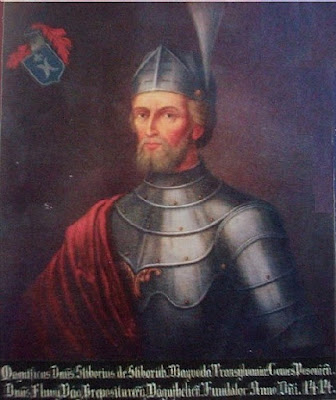Order of the Dragon : Book One by Lisa J. Yarde is the fictionalised biography and character portrayal of Dracula's father, Vlad II Dracul, also known as Vlad the Dragon. Grand and colourful, this historical novel spans the years 1408 to 1432, from Vlad the Dragon's youth to his early years as a father. Those curious about the real Dracula or Vlad the Impaler might be tempted to skip this book and wait until the other book instalments, but this would be a mistake. The life and times of Vlad the Dragon are so richly fascinating that readers would miss out on a journey of epic scale.
This novel is beautifully written and what lingers most for me is the depth of language and insights. There are many quotes that moved me, like,
“What was life and a man’s existence, except a test of his faith and resolve?”
Because this is after all a novel about a historical male figure, I want to stress that I really enjoyed the accent on Vlad’s character study. A thoughtful quote from an antiquity philosopher introduces each chapter, hinting to the passage’s themes and the life lessons that are to be learned, presumably by Vlad. Our main character begins his arc as a discontented and impulsive youth who has yet to acquire patience, gratitude, and strategic acumen. Throughout many years he will nurse political ambitions over his brothers, deep resentment toward the Turks, and later pay heed to a prophecy announcing his betrayal. He will be wary, not only of his lifelong enemy but also of his best friend. This last trait imbues one of the final scenes with a power I rarely felt in any novel. The passage is extremely well-written in its suspense and the complex emotions it stirs. It was a well-executed climax, drawing together all Vlad had experienced, and rendering his reactions highly plausible. Be ready for a surprise.
But onto the story. It takes place in a period wrought with war between Christendom and the Ottomans and this same tension is palpable in Vlad's intense hatred for the Turks who wage regular attacks into his homeland of Wallachia.
When we first meet Vlad, he is attempting a daring escape from home with his beloved twin sister, Arina. There are many things Vlad reproaches his father, the Voivode of Wallachia, not least that Prince Mircea has sold Arina as a betrothed to secure an alliance with the Turks. Arina's fate will haunt Vlad for many years to come.
Vlad is sent to Buda Castle in Hungary where begins his lifelong servitude to King Zsigmond. Through training, battles, tournaments, banquets and more adventures, he befriends an incredible cast of historical characters and through his eyes, we live through key dramatic events in Eastern European history.
During his service to King Zsigmond, the wicked queen Cillei Borbála will taunt Vlad and cause him great harm. Yet I found this woman captivating for several reasons, one being that Vlad soon learns of the Order of the Dragon, a secret confederacy of knights at the service of King Zsigmond which according to rumours was jointly formed by the queen. In all, I grew to respect Borbála and hope to read more of her in the next book in the series.
Romance-wise the story delves wonderfully into Vlad’s conflicted relationship with two fascinating women, one of which is no other than Cneajna of Moldavia who is gifted with strange prophetic powers and fated to become Dracula’s mother. Yet what I found most touching was the novel’s reverence toward friendship. Each of Vlad’s friends – the awe-inspiring Polish black knight, Zawisza Czarny, the love-thwarted and later canonized Queen Jadwiga of Poland, the warm and mystical Milena Olivera (Mileva Olivera Lazarević) an ex-consort to an ottoman sultan, and the Bulgarian noble, Fruzhin - are each worth their own novel. They were a treat to discover because Lisa J. Yarde is adept at painting well-rounded peripheral characters.
Those who enjoy culture and travel through literature will find pleasure in Order of the Dragon. It begins in today’s Romania, moves onto Hungary, today’s Slovakia, spends a while in Konstanz in Germany, later in Bohemia or today’s Czech Republic, followed by Poland, depicts a major battle in Serbia, travels to what is now Nuremberg in Germany to finally end in the birth town of Dracula, Sighișoara in Transylvania.
A novel of this breadth and depth is never easily undertaken and this speaks volumes about the author’s talent and historical research skills. When the journey draws to a close, one feels both enriched and curious to know more about the period. Thank goodness, there will be other books in the series.





No comments:
Post a Comment